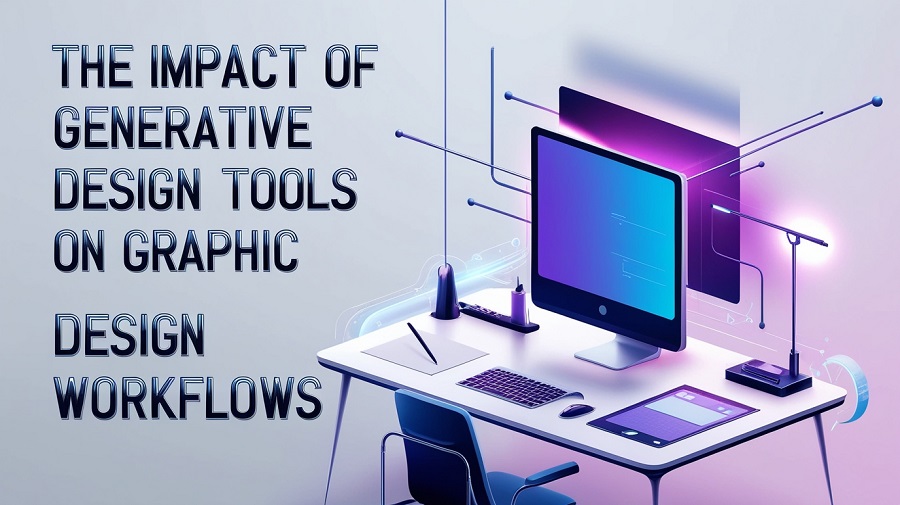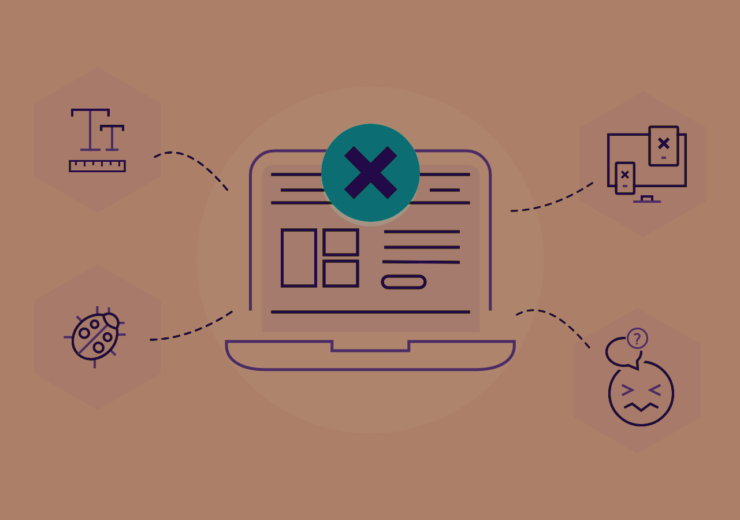The Impact of Generative Design Tools on Graphic Design Workflows

Emergence of generative design tools has drastically changed the landscape of graphic design. Graphic design was all about using Creativity and human imagination along with manual work until these new tools entered and started changing things. Algorithms combined with artificial intelligence can create millions of versions of a design, driving Creativity to its limits without tedious and monotonous work- in short, generative design tools.
At the same time, as designers start to incorporate these tools into the heart of their workflow, businesses are too fine-tuning their digital strategy. The e-commerce space, with a particular emphasis on PrestaShop, is where a friendly URL helps de-clutter user navigation and where SEO improvements will be largely influenced.
Let’s see how generative design tools can affect workflows within graphic design, as well as how something such as a PrestaShop module URL in PrestaShop can function to create seamless user experiences while informing better design processes.
1. What are Generative Design Tools?
—————————————–
Generative design tools are software platforms that use algorithms and machine learning to generate multiple design variations based on specific input criteria. They can go through parts of the design process automatically so that designers may explore thousands of possibilities in just a fraction of the time it would take to create it by hand. Generative design tools open up more possibilities: to develop logos, create visual layouts or some complex patterns.
For instance, while design tools manipulate every constituent of a design to see how it might look in a desired layout, generative tools can suggest hundreds of variations with just a few clicks. The designer then picks the most suitable one and refines it according to the project’s specifics.
How Generative Design Changes the Graphic Design Workflow
—————————————–
This forces a revolution in the way to design for a person. By automating certain tasks, they free up designers to make more strategic and creative decisions. Here is how they can change workflows:
a. Automation of repetitive tasks
Most of the processes, such as making an image size or applying filters or colors, were manually intensive and time-consuming with traditional workflows.Generative design tools now automate them also. Utilizing built-in algorithms, designers can input parameters into the tool for it to automatically generate many iterations of a design.
For example, if you are on an e-commerce site, you might have to create hundreds of product images or several banners. The design for such images would be a nuisance, but the generative tool can output thousands of variations, where a designer decides upon the best one for each product or campaign, which in itself provides additional creative time spent thinking and strategizing.
Similarly, dealing with URLs of a website, friendly URL in automates the process to generate clean and readable links, which improves customer experience and generates better SEO. The same thing generates tools that simplify the process of designing when it removes repetitive manual tasks that are included in its process.
b. Enhancing Creativity
Generative design tools save time; beyond this, they actually inspire Creativity. Such tools give designers thousands of ideas that may not necessarily be a part of their own conceptualization. It acts as a design partner that provides the user with new avenues and unexpected possibilities.
Generative tools can provide alternative logo variations, font choices, or color schemes for graphic designers who are working on branding projects. The designer can further perfect such recommendations to fit the identity of the brand. In this light, generative tools open the possibility for a wider canvas that would allow designers to experiment with more innovations while freeing them from those shackles of traditionalists.
Just like the PrestaShop module URL facilitates an organized and effective navigation system of websites, generative design tools ensure that the structured yet diverse design options give more refined results. The two technologies ensure an integration of automaton and human Creativity such that functionality and Creativity are aligned.
c. Optimization for Multiple Platforms
For any graphic design, the needs for this modern digital-first world dictate that it is optimized for multiple platforms – it needs to be suitable for the desktop, mobile, and to many, social media. This may seem like a nuisance to some designers because they must ensure each design looks consistent across different sizes of screens and devices.
Generative design tools do all this automatically and generate different variations of responsive designs optimized for various platforms. For example, a designer who is working on an ecommerce site might use generative tools to quickly come up with designs that seamlessly work between desktop and mobile platforms-meaning it is mobile-first-designed. It is important in both usability and SEO.
On the technical side, proper management for URLs of these designs and pages is needed. By using PrestaShop friendly URL, designers and developers can ensure the fact that users can navigate through such platform-optimized designs easily and simply without facing confusing or hard-to-read URLs.
3. PrestaShop Friendly URLs and Module URLs and their role in design optimization
—————————————–
For e-commerce sites, one of the somewhat tucked-away essentials in terms of design and user experience is the usability of URLs. A friendly URL makes your website both more SEO-friendly and easy to use. Easy-to-read and clean URLs will induce more trust from users and make them keep abreast with your content much better.
Similar to a Prestashop module URL, it is an essential part of managing several modules or extensions that the user would go on to implement in order to enhance his sites.
Modules can range from product filters to payment gateways. All these elements are rendered in a well-structured module URL to ensure they are easily integrated into the actual site and maintain clean design and functionality.
4. Generative Design and SEO
—————————————–
They can also indirectly improve SEO. How? By letting designers create several options for designs, they might be able to tune those designs for speed, accessibility, and mobile-friendliness- all three of which are relevant to search engine ranking. It can also ensure that the visual hierarchy, along with various design elements, follow best practices in user experience, hence improving bounce rates and engagement.
Now, for an e-commerce site where driving traffic is a critical commercial function for SEO, having a friendly URL structure from PrestaShop just helps optimize those efforts. Ideally optimized URLs will make your site appear more efficiently in the search engines for it is easier to crawl and index. Including this in fast-loading, well-designed pages mean more visibility and, thus, better conversion.
5. Challenges and Considerations
—————————————–
There are many benefits that the generative design tools present, however several challenges. One very obvious challenge was that overreliance on automation results in designs that seem like they lack a personal or human touch. Such tools must be balanced to the proper use for efficiency and not at the expense of losing their unique creative vision.
The skill with which one can use these tools is also a problem. Although they quicken workflows significantly, there’s a curve to understand how to set parameters and interpret the results. Not every design project will benefit from generative tools; rather, more bespoke, artistic designs are probably better suited for the hands-on approach of a traditional design process.
Conclusion
True is the fact that generative design tools impact graphic design workflows since they expose Creativity through taking on repetitive jobs from your workflows and generating multiple options of designs. For e-commerce designers, integration of such tools into their workflows simply signifies better and faster outcomes that resonate across various platforms.
For the users of PrestaShop, one cannot fail to notice that adopting different tools, such as PrestaShop friendly URLs, will always lead to an easy-to-navigate and well-structured online experience. These factors also seem to make it easier to manage a site while enhancing the SEO results on a website.
With ever-increasing synergy between the creative and the technological, a delicate balance of the strengths of these generative tools vis-a-vis human Creativity will determine success. So, with an adoption process that aligns with best practices in both design and SEO, businesses will certainly be able to stay at the top of this constantly changing digital landscape.




